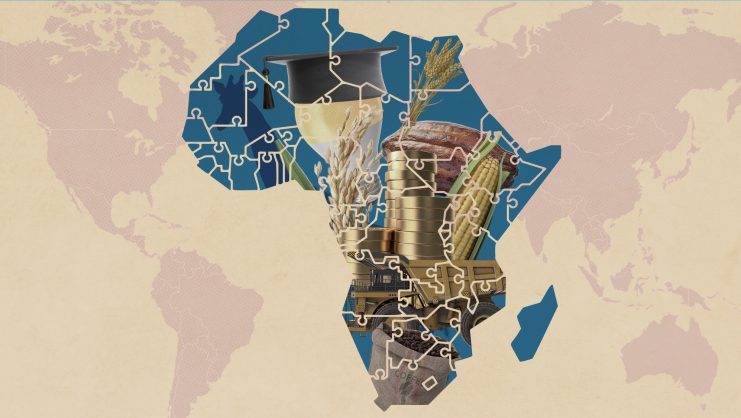In our new economic order, the technology industry is viewed as the main standard-bearer of the market. Most of the biggest investments of the past few years have been concentrated in tech-based organizations. These investments have mobilized billions upon billions of dollars with the near certainty of short- and medium-term profitability. However, not all of these huge investments have turned out to be wise. In many cases, if the investors had examined the transaction more closely, they might have realized that the asking price was too high. This sort of overvaluation has been seen not only in many initial public offerings, but also in business acquisition processes.
Nowadays, anything with a whiff of innovation or digital technology immediately generates high expectations. People talk about artificial intelligence, 3D printing, blockchain, and the Internet of Things in the same way they used to talk about mobile phones and social media. Companies offering products and services in these fields have developed rapidly and had a major impact on society and the economy. Innovation is the main strategic element that has attracted investors to these firms. Therefore, in order to correctly determine a company’s value, investors must take a long, hard look at its innovation policy.
Disruptive innovation introduces new technologies that create a new market and give rise to the development of associated products and services (for example, the Internet).
A formula for measuring innovation
To determine the value of a tech firm, project, or entrepreneurial idea, we have to distinguish two components: 1) the economic value of the organization without any disruptive innovations, and 2) the economic value of any innovations that may exist. The sum of these two components is the total value of the entity.
At first glance, this seems like simple arithmetic, but things get more complex when you have to define the type of innovation and translate it into economic terms. Let’s start by looking at the innovation factor: we can identify three models characterized by different degrees of boldness.
The simplest model—incremental innovation—involves updating and developing existing versions of a technology. The intermediate model—groundbreaking innovation—involves using existing products to develop new markets (for example, fintech). The boldest model—disruptive innovation—introduces new technologies that create a new market and give rise to the development of associated products and services (for example, the Internet).
How much is innovation worth?
The next step in this measurement process is to translate each type of innovation into financial terms. Economic value is composed of both extrinsic and intrinsic value. For extrinsic value, the measurement is provided by the market itself, so you must look to external sources. Identify market valuations made in similar cases and follow their lead. Disruptive innovations are obviously quite difficult to measure, given their pioneering and unfamiliar nature.
A company’s intrinsic economic valuation is more representative. This measurement should reflect any future business plans related to the company’s assets. An organization’s capacity for flexibility comes into play when its value is assessed using the classic discounted cash flow method. The finance team must consider multiple scenarios and probabilities in order to determine the company’s operational flexibility. They should also change certain variables from deterministic to probabilistic in some simulations. This approach is quite interesting because the future, perhaps especially in the digital world, tends to be uncertain, so executive flexibility is an essential component of decision-making. Indeed, flexibility is of the utmost importance when it comes to valuing disruptive innovations.
In order to reach a reasonable figure, the extrinsic value, which is simpler but in some ways trickier, should be checked against the intrinsic value during the analysis of the business plan. Investors who fail to do this could find themselves making unreasonable and unrealistic valuations of disruptive innovations.
The future, perhaps especially in the digital world, tends to be uncertain, so executive flexibility is an essential component of decision-making.
Assessing the value of organizations
To understand this methodology, let’s look at some real-life examples from the market. In Spain, there is a publicly traded biotech company called PharmaMar, which works in the research and development of cancer drugs of marine origin. Investors spent an average of €2 per share on PharmaMar stock in 2018, hoping that the company’s innovative promise would someday become a reality. Although PharmaMar’s EBITDA was negative, in this case the market saw value in a future scenario of disruptive innovation.
It is possible that PharmaMar will eventually develop and market a unique drug, but it is also possible that the project—and the investment—will fail. Predicting the future is not an exact science, but there are reasonable scenarios that might lead people to trust this investment.
We can also analyze the case of Spotify, which, like most tech firms, is listed on the American stock market. The company’s share price was initially valued at $165.90, although it later dropped to $128. According to the methodology described above—considering one scenario with innovation and another without it—this price is sustainable as long as the organization is capable of sustaining a positive cash flow of nearly €300 million.
Numerous cases can be analyzed to demonstrate the strategic need for the economic valuation of innovative ecosystems. At the end of the day, it all comes down to one of the norms of financial sustainability: the profitability of an investment.
© IE Insights.











